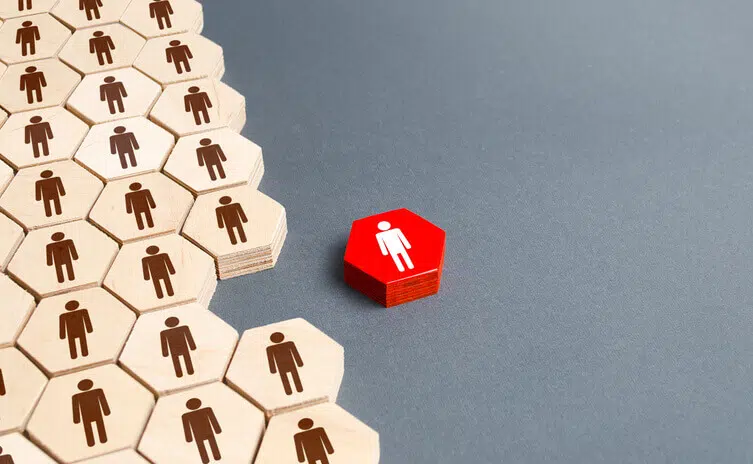
World Youth Skills Day: Supporting the Next Generation of Canadian Workers
July 15, 2025 Written by Rafael Spuldar

Navigating the job landscape and the realities of working life is a common challenge for young workers everywhere. It’s no different in Canada, where a rough work environment at the moment only adds to the struggle. HR teams are central to helping those young professionals build meaningful careers, and one way to do this is by offering them reskilling and upskilling opportunities—strategic imperatives for individual growth, talent retention, and business results.
With World Youth Skills Day 2025 on the horizon, this is a timely opportunity to examine how HR leaders can empower younger employees with the tools, support, and confidence to adapt and thrive.
How building skills enhances young employees’ potential
Upskilling enables individuals to build on their strengths, allowing them to grow within their roles or advance into related opportunities. For early-career professionals, this may mean enhancing communication skills, mastering emerging technologies, or delving deeper into their specialization.
HR departments can support this growth by offering mentorship, flexible training programs, and job-embedded learning. When organizations invest in the skill development of young employees, the payoff is clear: stronger performance, improved morale, and greater long-term retention. Those advancements are crucial for young workers to build resilience and confidence in a challenging work environment, as is the case in Canada today.
EXPERT INSIGHT
The unemployment rate among Canadians aged 15 to 24 is 14.2%, which is double the rate for the total population aged 15 years and older (7%).
Source: Labour Force Survey, Statistics Canada, May 2025.
Understanding upskilling and reskilling
Understanding the difference between upskilling and reskilling is essential when designing learning programs for young employees. While both contribute to workforce growth, they serve distinct purposes. Knowing when and how to use each option can help HR teams to align employee development with evolving organizational needs and opportunities.
Although they are often used interchangeably, upskilling and reskilling address different developmental needs:
- Upskilling builds on current competencies to enhance job performance or prepare for more senior responsibilities.
- Reskilling involves training individuals in entirely new capabilities, enabling them to transition into different functions or industries.
When you discern those two concepts, you’ll be better positioned to tailor programs that best serve individual aspirations and organizational needs.
Skill development in action: real-world examples
Consider a Junior Developer in Halifax who takes courses in machine learning to take on more complex product development tasks—this is upskilling. Meanwhile, a Retail Associate in Regina completing a cybersecurity certification to pivot into tech represents reskilling.
Another example: a Marketing Coordinator in Vancouver may upskill by learning tools like Power BI to strengthen a data-driven strategy. If they later decide to pursue a career in user experience (UX) design, they would reskill through a new stream of training in design, software, and usability testing.
In each of those cases, support from HR is essential, from identifying career interests to providing learning resources and development roadmaps.
Organizational advantages of investing in youth development
Beyond individual benefits, prioritizing skill development for younger workers builds stronger, more resilient organizations. By supporting youth through upskilling and reskilling, HR leaders can enhance employee loyalty, fuel innovation, and strengthen employer branding in a competitive Canadian labour market that rewards long-term workforce planning.
Here are the main benefits of prioritizing skills development:
- Stronger engagement: Support employees in their development, and they’ll be more invested in their roles and eager to contribute.
- Improved retention: When you offer training, you demonstrate a commitment to employee success. Then, you’ll foster internal mobility and have a more loyal staff.
- Greater agility: Teams that continuously develop are better positioned to respond to market and industry changes.
- Stronger employer reputation: Companies that offer growth opportunities attract high-potential candidates and build a desirable workplace culture.
- Boosted innovation: Employees with fresh skills bring new perspectives and contribute to creative, forward-thinking solutions.
Making youth skills development a strategic priority
World Youth Skills Day is a perfect reminder of the growing responsibility HR teams have in preparing young professionals for a future shaped by change. With many young people facing a labour market impacted by automation and shifting economic dynamics, conventional post-secondary pathways may not be sufficient.
HR leaders must actively design programs that equip young staff with real-world experience and future-ready skills. Mentorships, co-op placements, and job rotations are just a few ways to signal that your organization is invested in their success.
EXPERT INSIGHT
The unemployment rate among returning students aged 15–24 is 20.1%, 3.2 percentage points higher than it was one year prior.
Source: Labour Force Survey, Statistics Canada, May 2025.
5 ways to build youth skill development in your organization
Embedding skill development into your workplace culture ensures that young professionals continue to grow. HR leaders can make all the difference by designing learning strategies that are proactive, personalized, and aligned with business goals. These five approaches will help foster long-term engagement and capability across your team:
1. Assess workforce readiness through skill mapping
Use performance reviews and 360-degree feedback to pinpoint areas where gaps exist for young employees. HR teams can then align training options with company priorities and individual career goals.
2. Establish progressive learning programs
Design programs that meet younger employees where they are—whether that’s foundational digital literacy or advanced project management. These structured paths help clarify what comes next in their development.
3. Foster mentorship opportunities
Pair younger workers with experienced professionals to help them navigate workplace challenges. A good mentor can also encourage strategic thinking, career planning, and confidence building.
4. Embrace learning tools that match youth preferences
Digital-native employees appreciate platforms that are flexible, mobile, and engaging. Consider using gamified tools, short video modules, and interactive simulations to make learning more effective and engaging.
5. Connect skill-building to career advancement
Make it clear how learning ties to promotion pathways, new responsibilities, or interdepartmental moves. This clarity can drive motivation and help youth see a future with your organization.
Career transitions and outplacement for new talent
Outplacement services are traditionally seen as beneficial for executives or long-tenured employees. However, it’s increasingly relevant for younger professionals navigating early-career disruptions, whether due to economic shifts or organizational changes.
When young workers have access to outplacement services alongside upskilling and reskilling programs, they’ll be in a much better position to face the challenges of the job market. This combination of learning and transition support can position them for long-term success. Here’s how HR teams can adopt youth-oriented outplacement:
- Career coaching tailored to early-career stages
- Resume and interview support focused on transferable skills
- Subsidized access to online training or microcredentials
- Partnerships with local employment centres and colleges
HR teams and business leaders should maintain trust and support even during times of change. By blending internal learning with external career mobility, they’ll be showing not only empathy and care, but also strategic vision in future-proofing their organizations.
Youth skill development: final thoughts
World Youth Skills Day might seem like just another calendar date. However, as HR leaders and professionals, you can take this moment to prepare younger generations for the future of work.
Upskilling and reskilling are essential tools for shaping resilient, engaged, and future-proofed teams. By integrating continuous learning into your culture and pairing it with outplacement or redeployment programs, you create a workplace where every employee—regardless of age or experience—can thrive.Looking to implement a modern, youth-inclusive outplacement program? Contact us to tap into our industry-leading expertise and results-driven approach, tailored to your specific needs.
In need of outplacement assistance?
At Careerminds, we care about people first. That’s why we offer personalized talent management solutions for every level at lower costs, globally.




